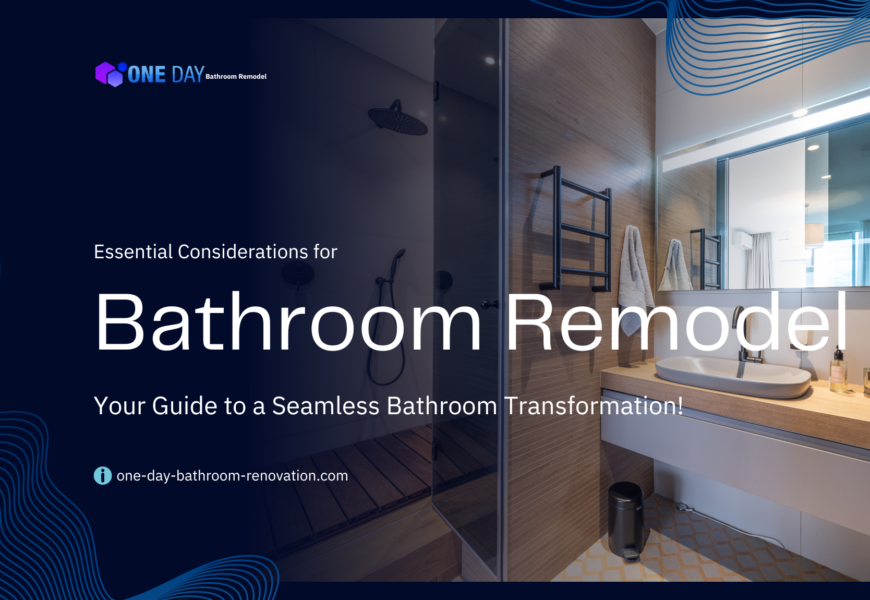Embarking on a bathroom renovation project can significantly enhance the functionality, aesthetics, and value of your home. However, to ensure a successful outcome and avoid costly mistakes, it’s essential to consider various factors before diving into the remodeling process. From setting a realistic budget to selecting the right materials, here are essential considerations for a seamless bathroom renovation.
- Define Your Budget: Establishing a clear and realistic budget is the first step in any renovation project. Determine how much you’re willing to invest in the renovation, taking into account both material costs and labor expenses. Be sure to include a contingency fund of around 10-20% of the total budget to cover unexpected expenses that may arise during the renovation process.
- Assess Your Needs and Goals: Before making any design decisions, assess your needs and goals for the renovated bathroom. Consider factors such as the number of people using the bathroom, your lifestyle, and any specific requirements, such as accessibility features or additional storage space. Identifying your priorities will help guide the design and layout of the new bathroom.
- Plan the Layout Thoughtfully: The layout of your bathroom plays a significant role in its functionality and practicality. Consider the existing plumbing and electrical layout and determine if any changes are necessary to accommodate your design vision. Optimize the use of space by maximizing storage options and ensuring sufficient clearance around fixtures for ease of movement.
- Choose Quality Materials: Selecting high-quality materials is crucial for the longevity and durability of your renovated bathroom. Invest in durable fixtures, such as faucets, sinks, and toilets, that are built to withstand daily use. Choose moisture-resistant materials for flooring, walls, and countertops to prevent water damage and mold growth. While quality materials may come with a higher upfront cost, they will ultimately save you money in the long run by reducing the need for frequent repairs and replacements.
- Consider Energy Efficiency: Incorporating energy-efficient features into your bathroom renovation can help reduce utility costs and minimize your environmental footprint. Choose water-saving fixtures, such as low-flow toilets and showerheads, to conserve water without sacrificing performance. Install LED lighting fixtures and energy-efficient ventilation fans to save electricity and improve indoor air quality.
- Hire Qualified Professionals: Unless you’re a skilled DIY enthusiast, hiring qualified professionals is essential for a successful bathroom renovation. Research and interview contractors, plumbers, electricians, and other tradespeople to ensure they have the necessary experience and credentials for the job. Request references and review past projects to gauge the quality of their workmanship. A reputable contractor will oversee the entire renovation process, from planning and permitting to construction and finishing touches, ensuring a smooth and stress-free experience.
- Plan for Practicality and Style: While aesthetics are important, don’t overlook practical considerations when designing your new bathroom. Choose a timeless design scheme that will stand the test of time and won’t quickly go out of style. Incorporate ample storage solutions, such as built-in cabinets, shelves, and niches, to keep the space organized and clutter-free. Pay attention to details such as lighting, hardware, and accessories to add personality and style to the room.
Conclusion: A successful bathroom renovation requires careful planning, attention to detail, and collaboration with qualified professionals. By defining your budget, assessing your needs and goals, and choosing quality materials and energy-efficient features, you can create a functional and stylish bathroom that meets your requirements and enhances your home’s value. With proper planning and execution, your renovated bathroom will provide years of enjoyment and comfort for you and your family.












